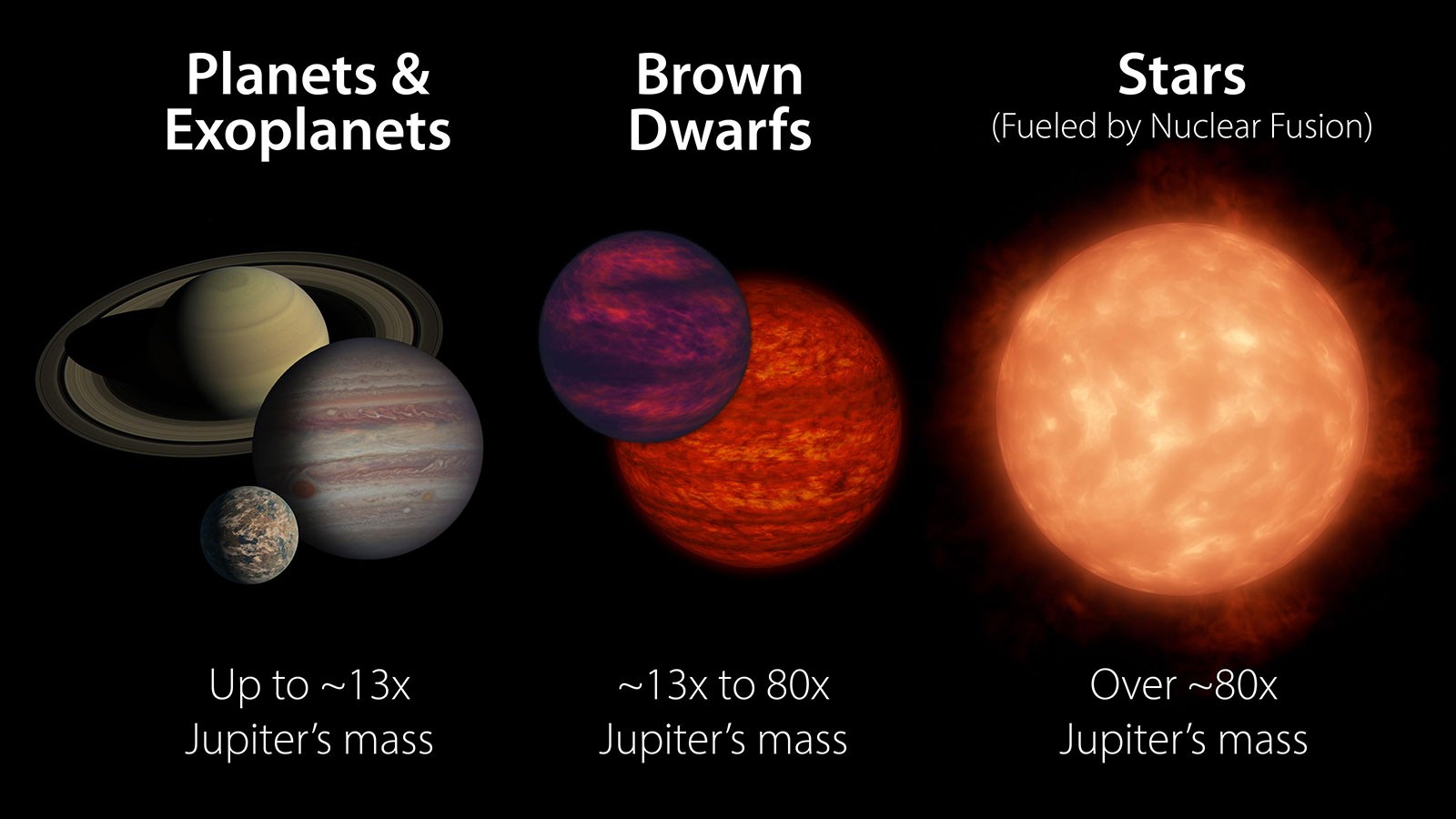Sometimes called "failed stars", brown dwarfs can spin at over 360,000 kilometers per hour, but this could be a limit that these objects could not cross... at the risk of self-destruction.
Brown dwarfs are objects that are too massive to be considered planets, but too unmassive to fit into the rank of stars. They are in fact incapable of initiating thermonuclear fusion reactions. That's why brown dwarfs don't glow.
So this is an intermediate object class. However, if we hear less about brown dwarfs than about stars or planets, make no mistake:these worlds number in the billions in our galaxy. It is therefore important to consider them.
A team of astronomers based on data from the Spitzer Space Telescope (now retired) announces that they have identified three new brown dwarfs with one thing in common:a extreme rotation speed.
The fastest brown dwarfs known so far completed one rotation every 1.4 hours, while others rotate on their own in almost ten hours. These three dwarfs, which have about the same diameter as Jupiter, but are between forty and seventy times more massive, rotate on themselves about once an hour .
Based on their size, the largest of these three new objects is estimated to be spinning at over a hundred kilometers per second (360,000 kilometers per hour).

Like stars or planets, brown dwarfs spin faster and faster as they cool and contract. What surprises the scientists here is that these three objects present almost the same speed of rotation .
But these brown dwarfs did not form together. They are also not at the same stage of their development. For the authors, who publish their work in The Astronomical Journal, these almost identical speeds are no coincidence. These three objects, they think, would have reached their speed limit . Beyond, they would tear apart in space, carried away by the centripetal force.
We know that in other rotating cosmic objects, such as stars, natural braking mechanisms at work prevent this destruction. It is not yet known if similar mechanisms exist in brown dwarfs, but the authors believe so.